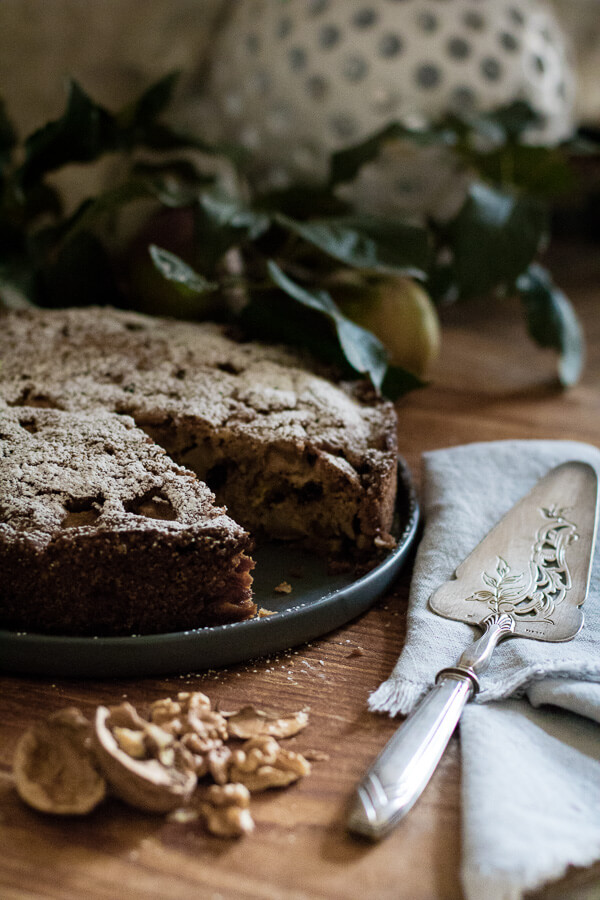
Of all the fruits that feature most in my life, the humble apple appears again and again. Perhaps my earliest memory is sneaking a bite from a crisp Granny Smith apple my grandmother had cored and hung around my brother’s neck as a teething aid. Being a full two and a half years his senior, I set upon a skilful demonstration of the task at hand—square milk teeth bearing down on its curved, milky-white flesh—successfully claiming an impressive bite of the fabled forbidden fruit.
Tart, tangy juice filled my mouth, leaving an indelible imprint of the first bite, while its pure lemony aroma enveloped us. I also remember the panic that ensued after I had strategically left the room—my grandmother frantically trying to dislodge the mysteriously absent chunk from my brother’s gummy grimace.
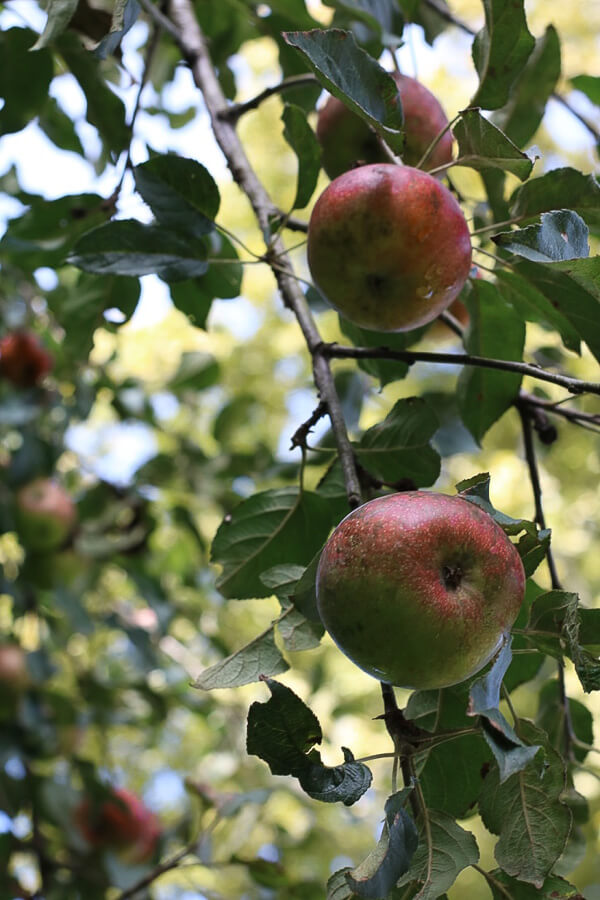
Years later, it was apples that adorned my wedding table one warm March day when I wed the son of an orchardist and celebrated in a white marquee south of Sydney, amidst autumn fields of blushing Pink Ladies. And it was this same orchardist’s son who took me and our three children hiking on the slopes of the Tian Shan mountains in Kazakhstan, where the oldest known species of apple, Malus sieversii, clings to the rocky slopes along the ancient Silk Road.
Apples are something the Kazakhs hold dear. The former capital, Almaty—Alma-Ata in Kazakh—means “father of apples,” and in true Central Asian style, you’ll find gaudy red statues and gilded apples scattered across the city. Though the Kazakhs had always been convinced of their rightful claim, the fatherland of apples was only granted true legitimacy in 2010, when an Italian research team sequenced the complete genome, proving once and for all that Malus sieversii was the original ancestor of today’s 3,000 known varieties.
Like any good story, this one wasn’t without a little help—from camels, wandering traders, and a marauding emperor or two. Portable and nutritious, apples were the perfect fast food for merchants traveling the Silk Road. Discarded apple cores gave rise to wild apple trees along the route, their seeds spread by birds, camels, and horses. With the help of Alexander the Great, the apple made its way from Persia to Greece, where grafting techniques allowed new varieties to flourish. The Greeks introduced apples to the Romans, and with a little help from the Vikings, they spread. And spread. The truth is, if apple pie is the benchmark for national identity in the U.S., there’s a little more Kazakh in every American than Don McLean might have realised.
My husband and I moved to Almaty in 2014, though my stays were more sporadic than his. I split my time between visits to the children at boarding school in the UK and, later, our house in France—camping there amidst the rubble of renovation, ambitiously steering it toward completion.
When I returned to Almaty, life slowed. I skied, hiked, cooked, and wandered through Zelyoni Bazaar, the city’s central fresh food market, housed beneath an austere Soviet hangar. Outside, street vendors sold trinkets bound for landfill. Inside, grey concrete floors and cold blue steel aisles framed stalls arranged in meticulous mosaics—rows of nuts and glistening dried fruits, pyramid-stacked piles of shiny red apples, and whole chickens held aloft by their feet, spun menacingly through the air under the blue glow of a butane torch, the flame searing away any lingering feathers or bacteria from their yellow, unbleached skin. There were plastic buckets of pickles, sacks of floral tea, and an entire aisle dedicated to the national specialty—horse meat.
But I came for the apples—deep red on the outside, the purest white within. They tasted of raspberries and honey, and I ate them for breakfast with fresh walnuts and creamy tvorog, Russian cottage cheese.
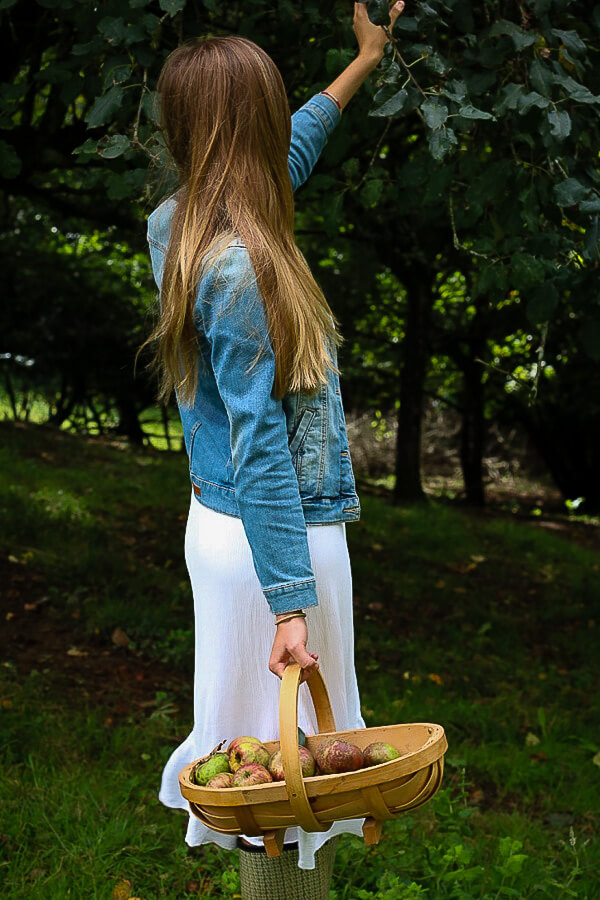
My daughter Annabelle in the orchard at Chateau Montfort.
It’s been just over two years since we purchased our petit chateau in South Western France. Although we didn’t realise it at the time, the garden included a rather modest abandoned orchard in the bottom field, somewhat unsurprisingly, solely dedicated to apples. Like me, they came to France via Kazakhstan, but sadly, their gnarled branches bare no record of their heirloom varieties, though they seem to be a decisive mixture of eating and cooking apples.
Despite being in dire need of pruning, they’ve produced another impressive crop this year. As with anything in vast supply, the challenge is conjuring up as many uses for them as possible before they spoil. More so, finding the time to do it.
This recipe, like the apples in my life, is a constant. I think I’ve cooked it more than any other cake, and for good reason. It’s deliciously moist, buttery and fragrant with the same spices that made their way to Europe via the Silk Road. Best of all, it’s ridiculously easy and very quick to make.
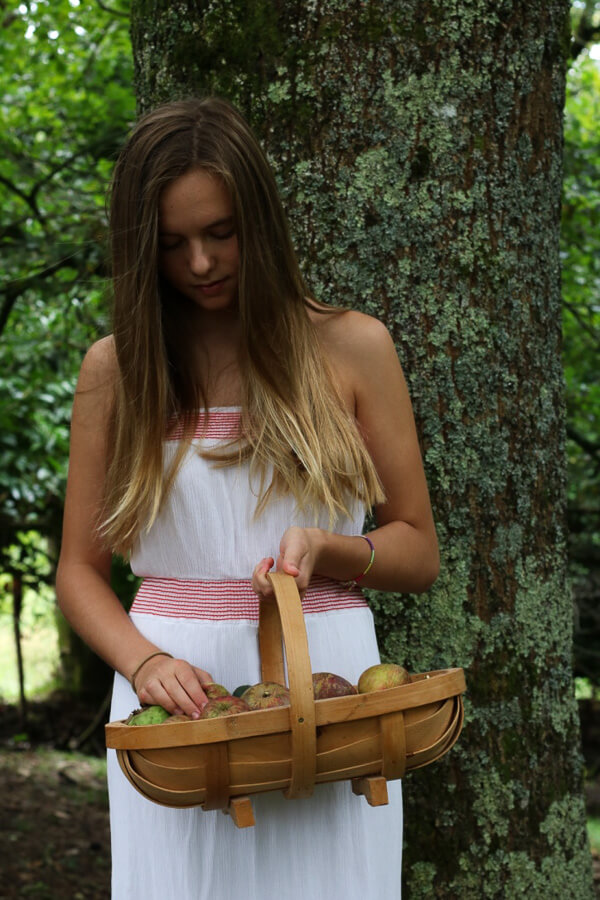
Spiced Apple Cake
A beautifully moist cake filled with apples, walnuts, and warm spices—perfect for afternoon tea.
Ingredients
2 cups chopped apples (any eating variety)
1 ½ cups sugar
2 eggs, beaten
260g melted butter
½ cup dried currants
1 cup walnuts, roughly chopped
2 ½ cups plain flour
1 teaspoon bicarbonate of soda
1 teaspoon mixed spice
Method
Preheat the oven to 180°C (fan-forced). Grease and line a 23cm springform cake tin.
In a large bowl, combine the apples, sugar, eggs, melted butter, currants, and walnuts.
Sift together the flour, bicarbonate of soda, and mixed spice, then stir into the fruit mixture until well combined.
Pour the batter into the prepared cake tin.
Bake for 1 hour 15 minutes, or until a skewer inserted into the center comes out clean.
Allow to cool slightly before removing from the tin. Dust with icing sugar before serving.
Tip: Placing a tray under the cake tin while baking will catch any butter that may escape.
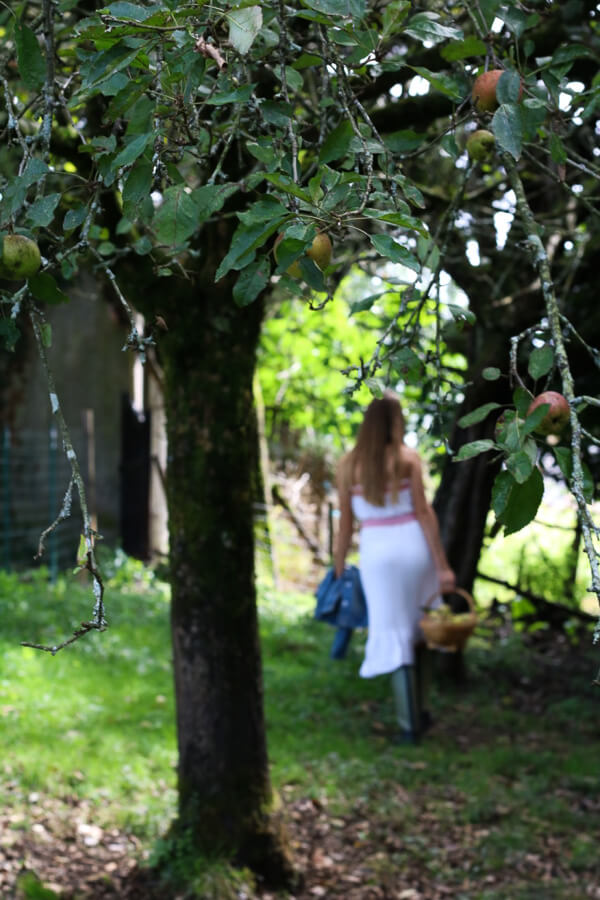
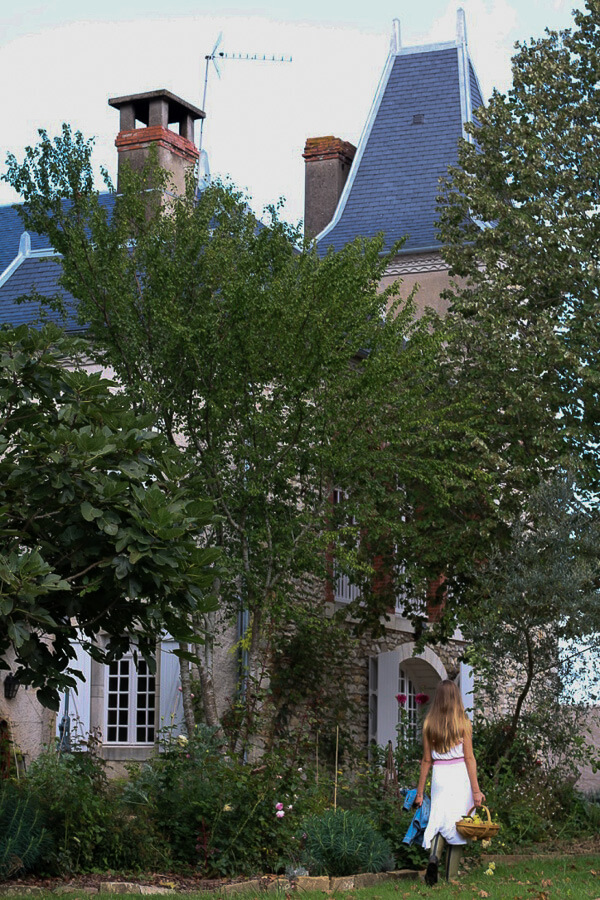
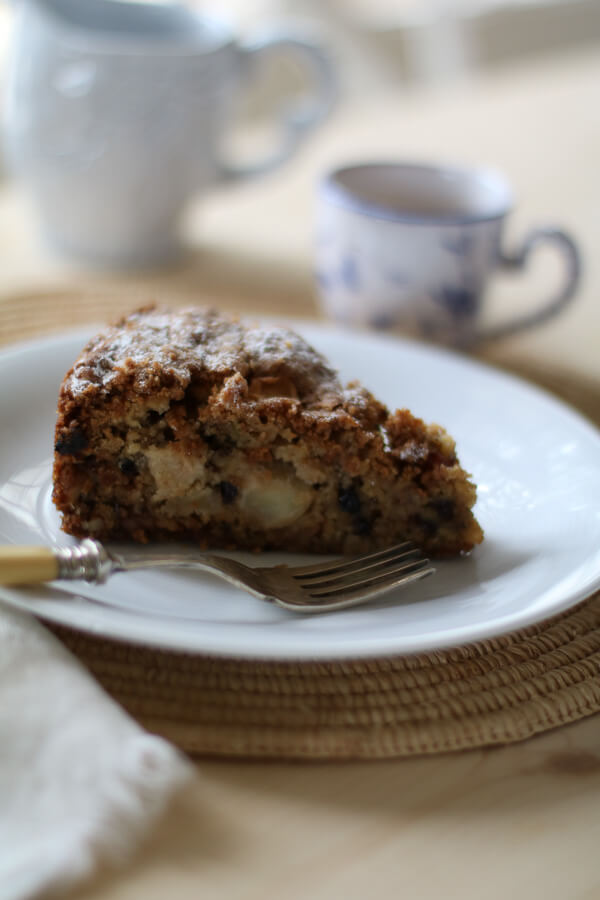
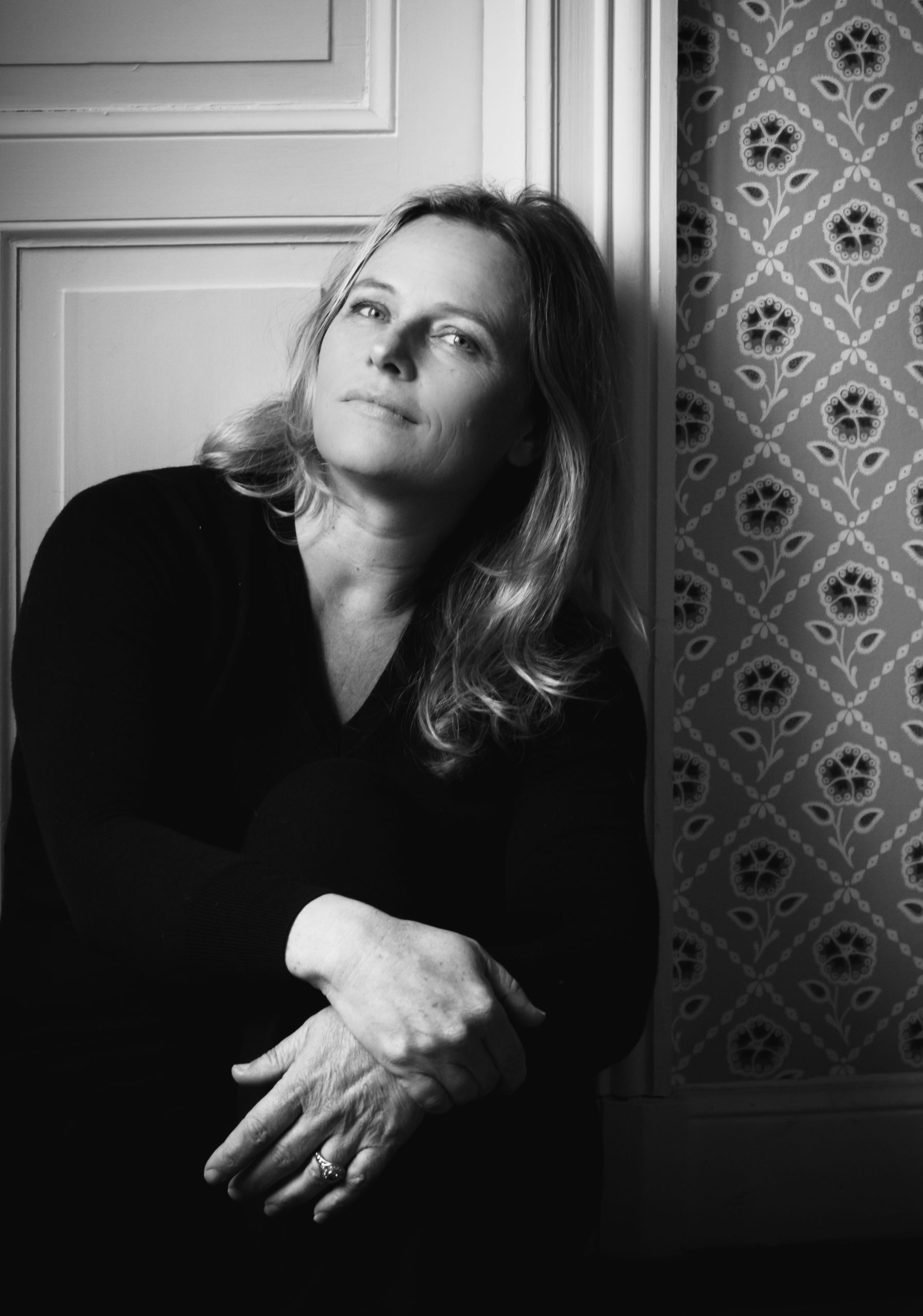
Yum, with an orchardist husband you are almost sure to have your apple tree pruned by next season
I hope so!
Lots of apple and walnut here in Splatter too, will give it a go Sarah, thank you! xx
I Hope you enjoy it Mrs H! Thank you for your support. Love to you all xx
Hi Sara i think i can even manage this one. Quick question – do you peel your apples? Beautiful photos. Christine x
Hi Christine! No need to peel the apples. It’s a lovely rustic cake and the peel cook away in the baking. Enjoy!!
[…] it off with a slice of Apple and Walnut cake for dessert and a glass of Jurancon […]